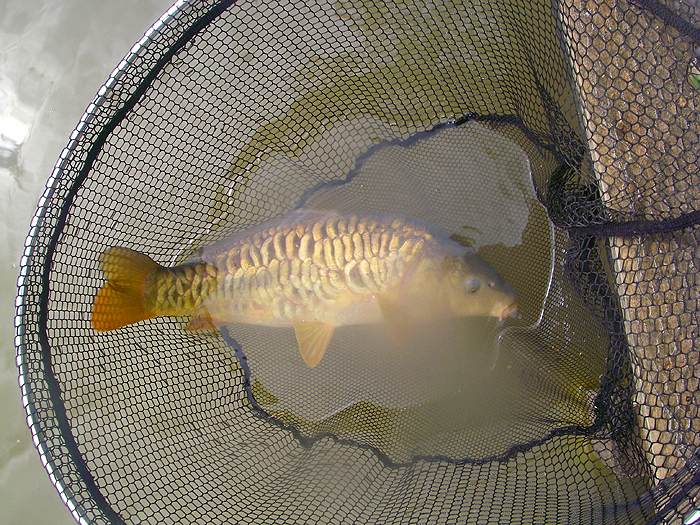

Catch Fish with
Mike Ladle
Information Page
Freshwater Fishing
For anyone unfamiliar with the site always check the FRESHWATER, SALTWATER and TACK-TICS pages. The Saltwater page now extends back as a record of over several years of (mostly) sea fishing and may be a useful guide as to when to fish. The Freshwater stuff is also up to date now. I keep adding to both. These pages are effectively my diary and the latest will usually be about fishing in the previous day or two. As you see I also add the odd piece from my friends and correspondents if I've not been doing much. The Tactics pages which are chiefly 'how I do it' plus a bit of science are also updated regularly and (I think) worth a read (the earlier ones are mostly tackle and 'how to do it' stuff).
Lily pad carp.
I'm a bit of a stick-in-the-mud when it comes to carp fishing. It's probably because I'm not the most patient person in the world and although I can wait for hours if I know there's a big fish likely to take the bait, aimless legering with three rods and a buzzer bar is not for me. What I really enjoy is the excitement of seeing a carp take the bait (or not take the bait). Last week we had some nice sunny weather and I decided to go to my local lakes. For once there were no cars in the car park so I knew I had the place to myself and wouldn't be disturbing anyone by wandering about and seeking a fish.
My tackle is simple - the 11ft Surespin rod that I use for bass, my Stradic, Whiplash braid and a strong, size six barbless carp hook. The tactics are also basic. I use a about a third of a small farmhouse loaf cut into rough cubes. The hook is threaded through the crust and tucked in a second time to secure the bait. I find a patch of water lilies (the big, tough ones with white or pink flowers) and watch for movement. The fish usually tent or shake the leaves and this is the signal for me to drop my crust into a gap close to the movement. I then draw it towards me so that all the line is on top of the leaves and only the baited hook is in the water. The rod is then laid on the bank with the bale arm closed and just a few inches of slack line to allow the fish to suck the bait in. I then sit beside the gear with my hand hovering over the butt section.
Now comes the exciting bit. Occasionally a fish with take straight away but usually there's a waiting period. It makes me hold my breath when I see the shaking leaves coming closer and closer to my bait. With luck there is then a loud slurping as the fish tries to ingest the crust. At this point I find it is fatal to try and judge a strike, far better to wait until the tip of the rod is dragged round. For anyone who wants to try it the only advice I would give is never let your hand leave the rod or it could arrow out into the lake. More often than not the fish is hooked by the time I pick the rod up and scramble to my feet. Now it is a bit of a tug of war between me and the carp. I try to keep them near the surface and slide them through the lily leaves. They are after all 'designed' to slip through vegetation in a streamlined fashion.
On my latest session I fished for two-and-a-half hours, had six takes and landed four carp between about eight and fifteen pounds. Hectic sport in my book. All the fish were hooked in the lip or just inside the mouth and the two that got away it was my own fault for being too hasty to pick up the rod. I have to say although carp are not the most attractive fish in the world (at least I don't think they are) it is wonderful sport and the anticipation of a take is second to none. Of course they are decent sized fish so they put up a fair old scrap too but once I have them in open water I know that they are mine unless the hook falls out.
If you have any comments or questions about fish, methods, tactics or 'what have you!' get in touch with me by sending an E-MAIL to - docladle@hotmail.com
Where to put the bait.
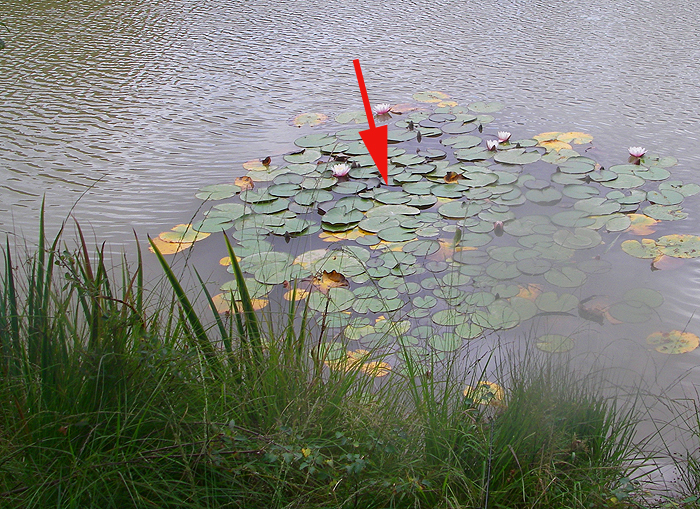
Number one.
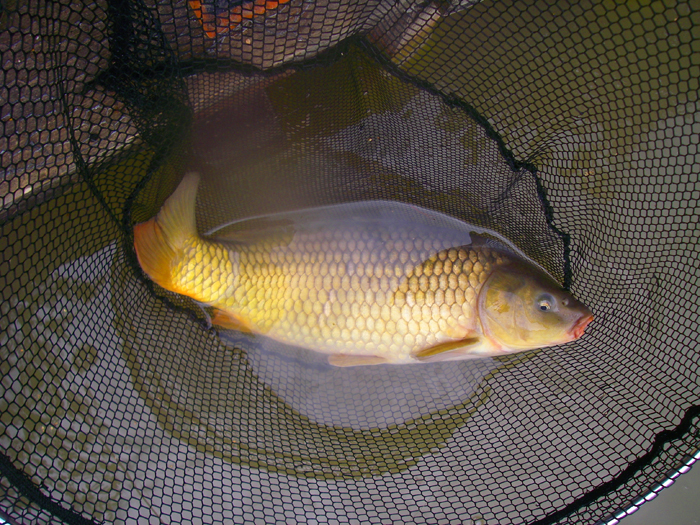
Number two.
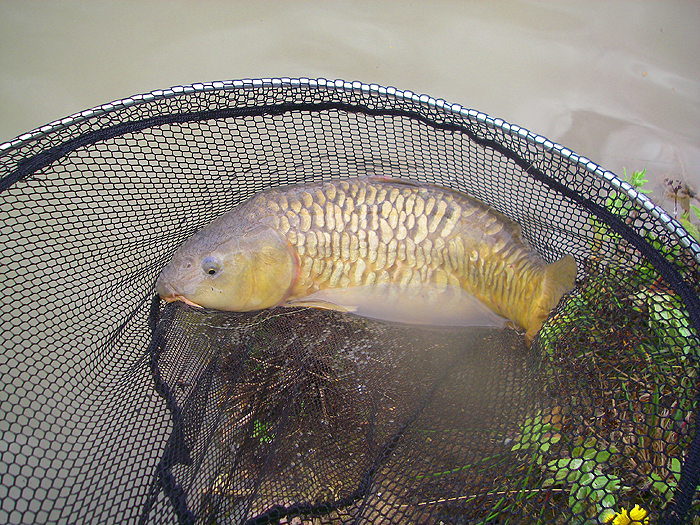
Number three.
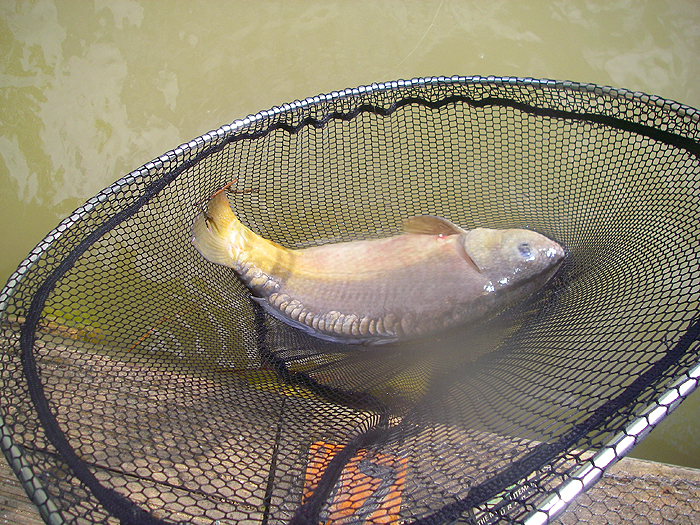
Number four.
